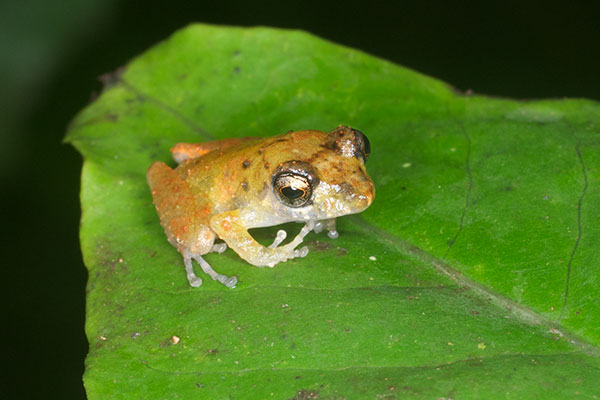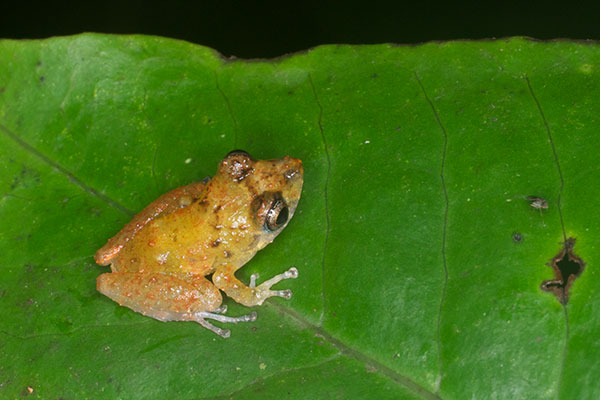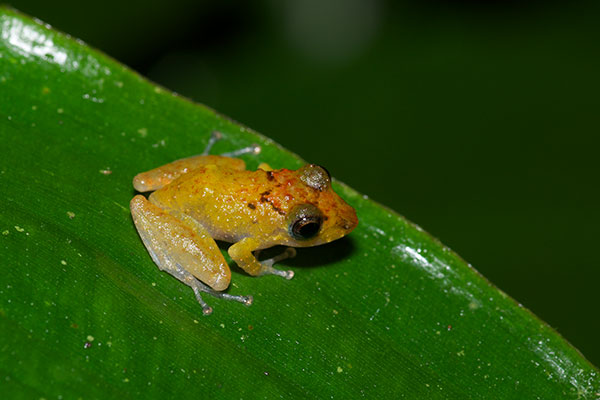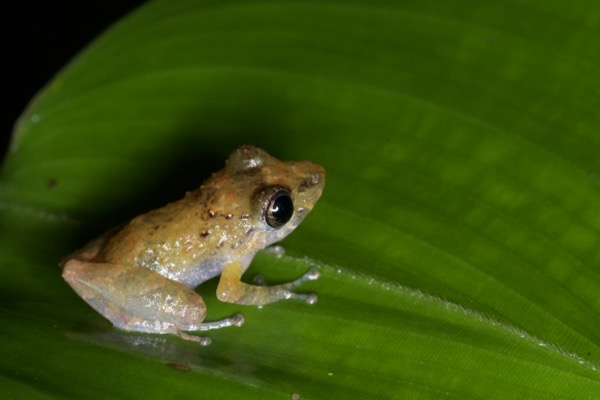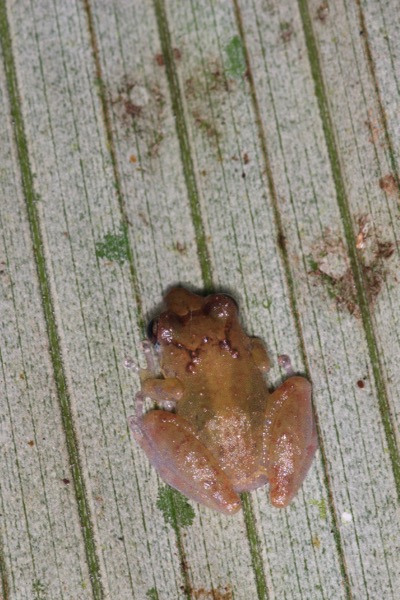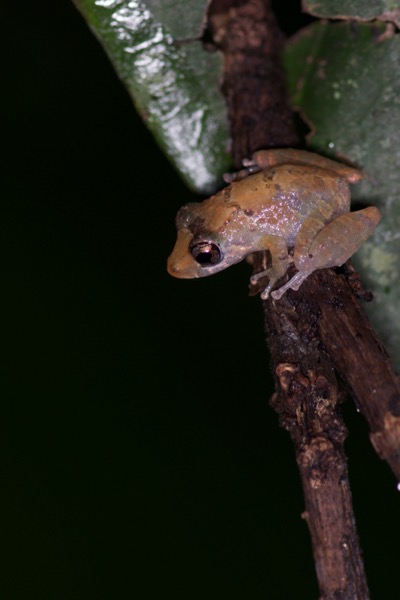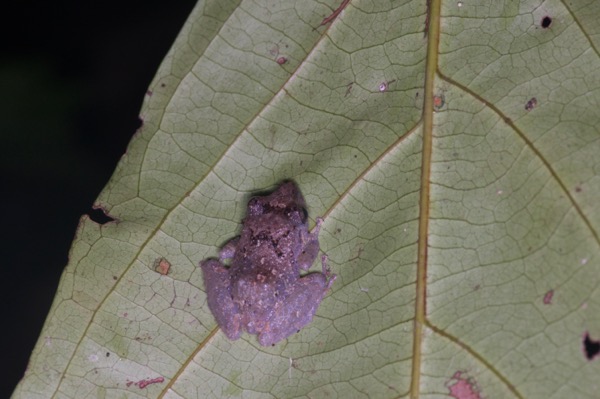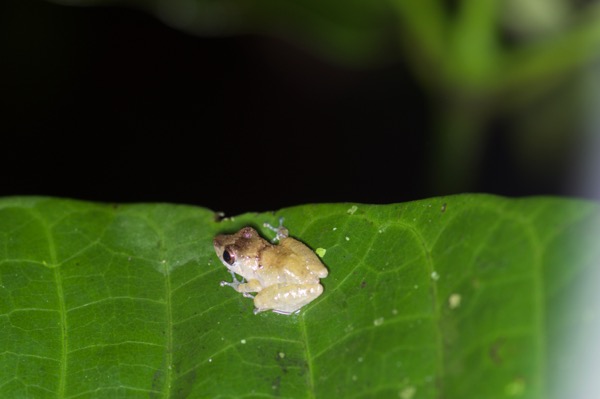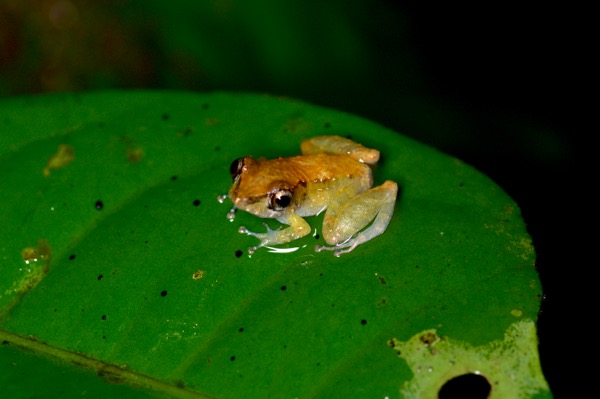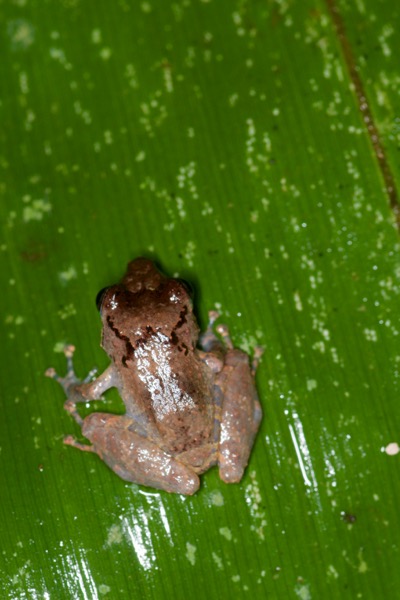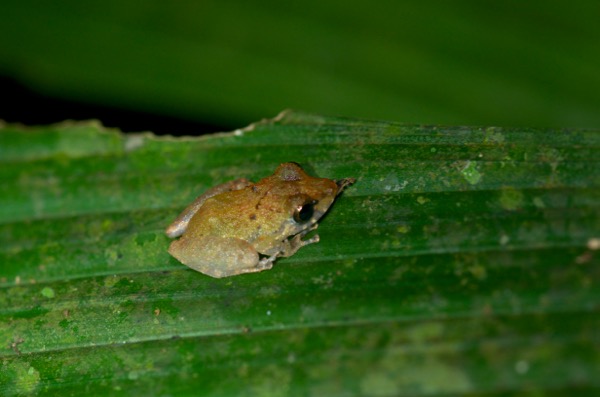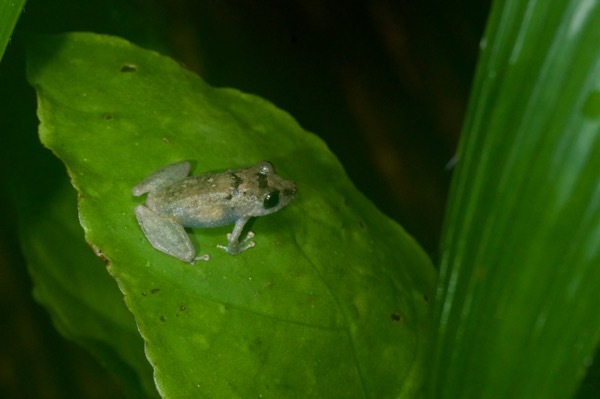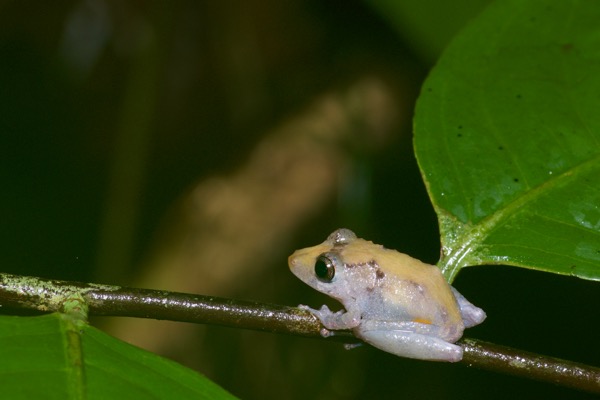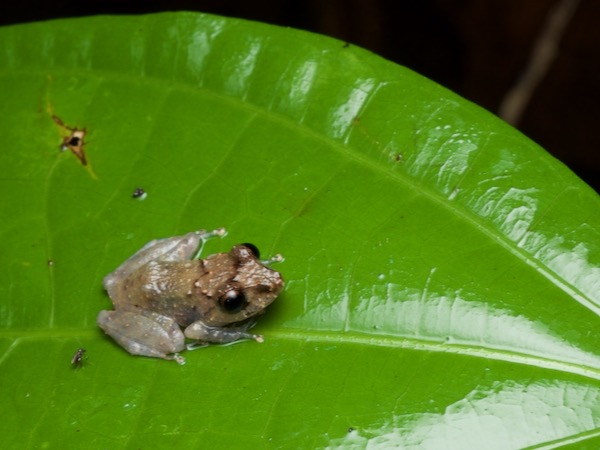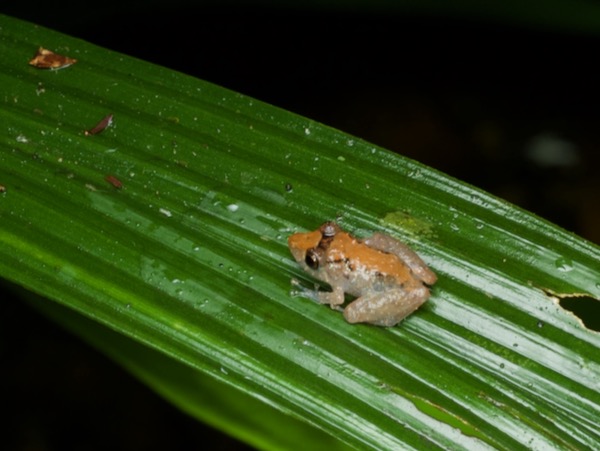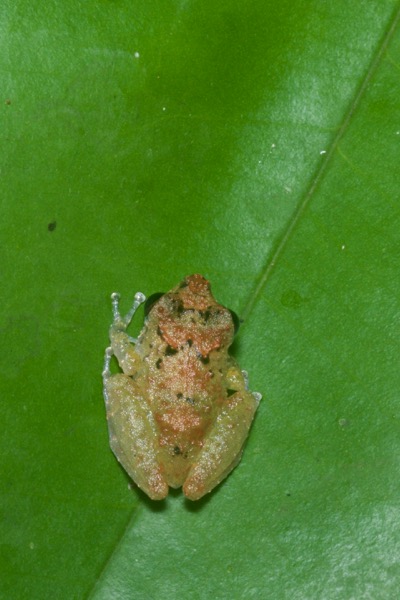Pristimantis luscombei
—
Luscombe’s Rain Frog
The neotropical genus
Pristimantis contains more species than any other genus of frogs on Earth, or indeed any other genus of vertebrates. And new
Pristimantis species are being discovered or described all the time. Unsurprisingly, it is often very difficult to identify which species a particular
Pristimantis individual belongs to.
A series of tiny light-colored Pristimantis frogs with W-shaped scapular ridges had defeated my attempts to identify them in 2013 and 2014. When I saw many more such frogs in 2016 I tried harder to figure them out, and this time I think I succeeded, with the help of a 2014 paper by H. Mauricio Ortega-Andrade and Pablo J. Venegas. The most relevant conclusion from this paper is that the frogs with a light-colored reticulated snout (such as this one) formerly identified as P. luscombei are now classified as a different species, P. miktos, and the frogs that look like my little light-colored W-marked guys are what remains in P. luscombei.
Madre Selva Biological Station, Loreto, Peru—January 13, 2013
At the time, I couldn't find any good guess for this tiny yellowish
Pristimantis. Dick Bartlett also did not recognize it, and thought that it was perhaps an unidentifiably tiny baby.
Here is a complete list of the herps I saw in the wild on my 2013 MT Amazon Expeditions trip.
Santa Cruz Forest Reserve, Loreto, Peru—January 19, 2014
This small
Pristimantis sure looked similar to the even-smaller one from the previous year. I still didn't have a good guess as to which species it might be, though.
Here is a complete list of the herps I saw in the wild on my 2014 MT Amazon Expeditions trip.
Madre Selva Biological Station, Loreto, Peru—January 31, 2016
In 2016 I saw many little frogs that seemed to be of this species. These four were all from my first night at Madre Selva. It's quite possible (even likely) that some of them actually belong to one or more other
Pristimantis species, and I would love to hear of any other opinions on this matter.
My Travelogues and Trip Lists page includes a complete list of the herps I saw in the wild on my 2016 MT Amazon Expeditions trip.
Madre Selva Biological Station, Loreto, Peru—February 1, 2016
Another batch, from night 2 at Madre Selva in 2016. There is quite a bit of color variation here, which suggests that these are not necessarily all the same species.
Madre Selva Biological Station, Loreto, Peru—February 4, 2016
One more from night five in Madre Selva. It's surprising that I didn't see any on nights three or four. This one is a dead ringer for the ones I saw in 2013 and 2014.
Santa Cruz Forest Reserve, Loreto, Peru—February 7, 2016
This one, with a grayer color and a prominent crossbar between the eyes, looks very similar to the last one from Jan 31 2016 above. Just variation, or a different species?
Santa Cruz Forest Reserve, Loreto, Peru—February 8, 2016
Another standard-looking one.
Santa Cruz Forest Reserve, Loreto, Peru—February 9, 2016
This one has a distinct cream color, and much lighter sides than most of the others. A yellow spot on the thigh is also partly visible. Perhaps these are all clues that this frog is some other species, but for now I'm assuming it to be a variation of P. luscombei.
Santa Cruz Forest Reserve, Loreto, Peru—January 25, 2022
I found a couple more little Pristimantis this year that seem to match this species. One has the orange back and the other doesn't, but the other distinguishing characteristics are present on both.
Printed references:
